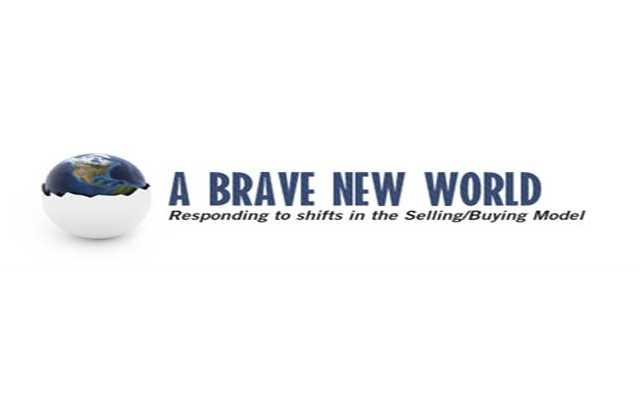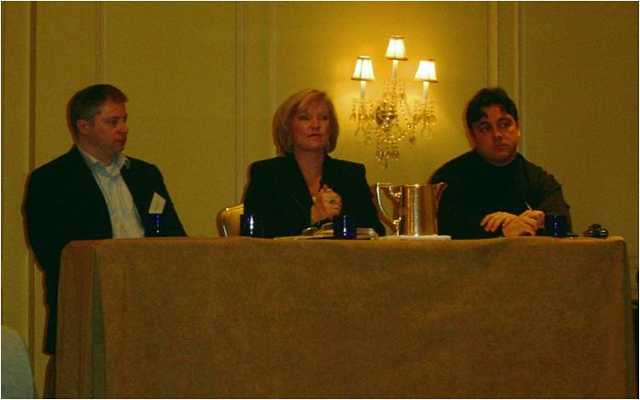5 Lessons in Marketing’s Brave New World

This past week The Marketing Consigliere was fortunate enough to attend a very interesting event. Eloqua had assembled some of the brightest Marketing practitioners in the Washington DC area for their “A Brave New World” road show, which is also appearing in New York, Chicago, Boston, Austin, Fort Lauderdale, Denver, Minneapolis, Atlanta, and Southern California. The name of the event was appropriate.
Joe Payne, CEO of Eloqua, started the morning with a brief talk about the purpose of the event. It wasn’t about Eloqua (at least directly, of course) There was no “pre-press release” mention of their money back satisfaction guarantee. There were no screens on which to demo his company’s popular marketing automation app – this was not a “we’re wonderful” roadshow.
This was a real thought leadership session with some of the best minds in enterprise marketing management and sales: Steve Woods, CTO of Eloqua and author of [amazon ASIN=”0979988551″]Digital Body Language[/amazon]; Debbie Qaqish, Principal and Chief Revenue Officer at The Pedowitz Group; and Greg Alexander, CEO of Sales Benchmark Index and author of [amazon ASIN=”B002ACPM72″]Making the Number[/amazon]. Moderated by Lisa Welch, Eloqua’s Vice President of Strategic Accounts, this panel of experts discussed the “Brave New World” of Marketing where revenue is key.

Left to right: Steve Woods of Eloqua, Debbie Qaqish of The Pedowitz Group, and Greg Alexander of Sales Benchmark Index
While there was a lot covered regarding the issues facing marketing and sales organizations, here are five that the Marketing Consigliere walked away with:
1. Procurement departments are becoming more strategic in their function.
If you are in a small to medium size firm, you probably do not have a distinct procurement department; perhaps it’s a secondary department under finance or HR and the person conducting procurement wears other more prominent hats. However, larger and more disciplined firms understand that procurement is indeed more strategic. Who they do business with over long periods of time may give them competitive advantages over others. They are “bucketing” you and your competitors into “strategic” and “non-strategic” buckets.
So as you build relationships with prospects, what are you doing to communicate and demonstrate that it is in their strategic interest to do business with you? Is your product or service truly strategic for them or is it easily replaced or substituted? How are you set up in your contract mechanisms, distribution processes, and product/service support that reduces financial risk for the potential customer? And have you really identified the players on the procurement side that you need to reach, just as you have the financial/end users/champions as described in popular selling models? Bottom line: how is your offering relative to their success?
2. Customers are looking for deep content when researching prior to a complex procurement.
More and more searches are not for merely “Generic Product XYZ.” Searches consist of multiple, precise words and the top of the organic search results will not necessarily contain any links to your site. The results will be social media driven because that’s where the content will be – people want to see how other people are benefitting from your products and services and the conversation will occur with or without your input. It will behoove you to create or link to objective, relative content that honestly portrays your offerings. A sophisticated buying center, once again, is thinking stragetically and will view a lack of rich or a dearth of slanted content as suspect.
3. Cut your internal measurement in half.
Greg Alexander admonished the audience to stop measuring for the sake of measuring. It can be a waste of money. Don’t obsess as much with what can be measured internally; focus on what can be measured externally such as what the competition is doing or your prospects perceptions. He’s correct. But for the most part, it seems that firms either undermeasure or over measure. Measuring can be tedious and its true value never properly determined and acted upon. Hence it is for the most part, a luxury that most companies cannot afford- they blindly fly forward “without instruments,” hoping to get to their destination without crashing.
Measurement can be helpful when you put an operational mindset to it. What are the anomolies that appear when you measure marketing and sales statistics? They can be the the sales cycle that is taking to long, sucking up your resources and hence profitabilty. The big “win” you want for bragging rights may be a timesink that drains your organization’s finances. So measure what you must, but don’t do it in a departmental silo. Work with your beancounters to determine what is worth measuring and at what point a deal becomes “no deal” based on what it is you need to measure.
4. Inside sales should be getting more investment than “traditional” outside sales.
When asked about what firms should not change about selling, it appeared that everyone on the panel agreed the answer was “keep investing in inside sales.” The “Death of the Wingtip” is the decreasing dependency for relationship drivers of face-to-face sales. You can actually build trust through the smart use of technology, not golfing. The Marketing Consigliere remembers the day when a two-thousand dollar inside sale was amazing. Now B2B sales are reaching the $100K mark without the customer meeting the seller. Of course, for the most part these sales are by companies who have great brand credentials and are completely trusted, so the need for an individual whose trust is built over time is not as great.
Network centric tools such as webinar platforms have made pre-sales meeting and collaborations easier for people who no longer have to step into a car or onto a plane. Investment in these applications and call center technologies in general will increase. Of course, The Marketing Consigliere suggests you do some measurement of call center key performance indicators, and if your inside sales reps want to wear wingtips or sneakers, let them.
5. Stop thinking about “product selling” or even “solutions” selling – transform to and “enterprise selling” organization.
The “Upsell,” “Cross sell,” and “Consultative selling” are still important. However, for long term relationships with complex buying organziations, “Enterprise” selling is an increasingly popular concept. What are the various communications to the different stakeholders based on a particular stage in the buying process? Besides the capabilities of the product/service offering, what are the capabilities of the firm? What are the multiple layer of values across the customer enterprise that your firm brings?
The Marketing Consigliere was very fortunate to have worked at an Internet/telecom service provider during the dotcom era that was a robust wholesaling organization. Since there were no direct sales and therefore the company’s success was determined by its customers’ ability to market and sell, it was emphasized that the account managers must be the “CEO of Broadband” within his account organization. That meant doing everything possible to see that they succeeded. One may argue that “Enterprise Selling” is the lastest moniker for an “aligned” or “strong” partnership and not a new concept at all.
You should always be bringing more value to the table than the market value of your product/service offering. The key here is that enterprise selling has been more codified, and has become its own discipline that requires monitoring and measurement before the deal is even made. Yes, we will be seeing more of this in the future. Not every sales and marketing professional is cut out for it and not every company will succeed at it, but those that do will reap long term benefits from it.
So in the end, “A Brave New World” offered many other lessons with which to walk away. If you can get a chance, go to an event where either these professionals are speaking together or individually. You’ll learn a lot about where the B2B Marketing world should be going.
